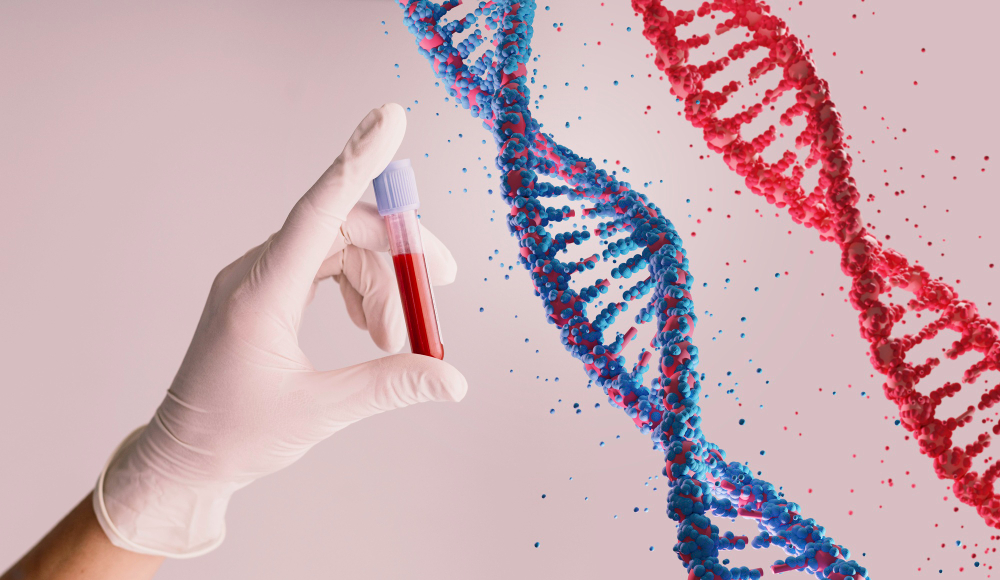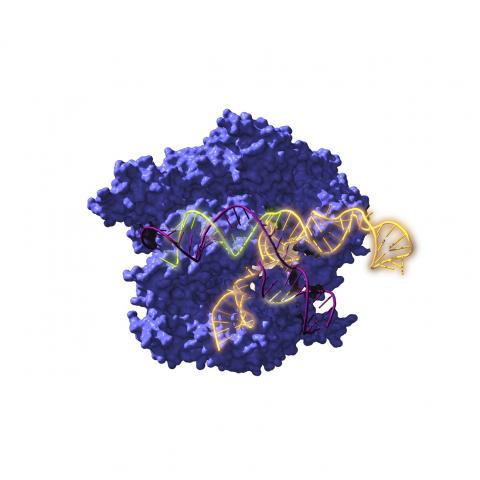Reactions: epigenetic editing technique lowers cholesterol in mice without altering DNA
Epigenetic editing is a technique that aims to alter gene expression without the need to modify the DNA sequence, as gene editing techniques do. In this way, Italian researchers have succeeded in silencing the PCSK9 gene in mice, thereby reducing cholesterol levels by half for at least a year. According to the authors, and assuming further evaluation is needed, their platform "could lay the foundations for the development of this type of therapy". The results are published in the journal Nature.

Güell - Silencing
Marc Güell
Coordinator of the Translational Synthetic Biology research group and full professor at Pompeu Fabra University (UPF)
This is fantastic quality work, done by a group that I know well and that is very strong and pioneering in this field of epigenetic editing.
This study has achieved results similar to those achieved with gene editing (by the company Verve Therapeutics, with CRISPR-based base editors). I also find it very interesting at a conceptual level. In this case, a gene is effectively deactivated without changing a single base in the genome. It is very interesting to see that these changes in gene expression are not only maintained over a long period of time, but are 'inherited' after liver regeneration.
This is a very new advanced therapy modality. As always in these cases, all types of toxicity and longer-term efficacy will need to be closely monitored, but the study looks very promising.
Montoliu - Silencing (EN)
Lluís Montoliu
Research professor at the National Biotechnology Centre (CNB-CSIC) and at the CIBERER-ISCIII
The extraordinarily versatile CRISPR-Cas gene-editing tools include some surprising variants (such as dCas9) that have lost their original function of cutting DNA, although they retain their ability to detect and bind to specific sequences in the genome and, from there, alter the expression of neighbouring genes. This is epigenetic editing, which does not alter the sequence of genes, but does alter their expression profile, and can both reactivate silenced genes and inactivate genes that are functioning, thanks to the fact that this dCas9 is associated with other activator or repressor proteins that can reactivate or silence a gene at will, respectively. The same can be done with two gene editing tools that predate CRISPR-Cas, namely TALE and ZFP, both of which lack DNA nuclease cutting activity. Therefore, both dCas9 and TALE or ZFP are able to bind to specific sequences in the genome and, if associated with activator or repressor proteins, they will also become epigenetic editors capable of turning a gene on or off.
A team of Italian researchers at the San Raffaele Telethon Institute of Gene Therapy led by Angelo Lombardo has explored the use of these three types of epigenetic editors to silence the expression of a gene, PCSK9, and has succeeded in halving the concentration of circulating cholesterol in the blood of laboratory mice, a reduction that has been maintained one year after treatment. These results have been published in the journal Nature. This is a preclinical study, using animal models, which should give way to other studies in macaques and the corresponding clinical trial to assess whether the therapeutic success obtained now in mice can be reproduced first in non-human primates and then in patients in the future, with the necessary safety and efficacy.
The PCSK9 gene is an attractive target for controlling blood cholesterol levels, high concentrations of which significantly increase the risk of developing cardiovascular diseases, such as atherosclerosis, which can lead to heart attack, myocardial infarction and stroke. The PCSK9 protein promotes the degradation of the low-density lipoprotein (LDL) receptor. LDL is what carries cholesterol in the blood. The LDL receptor is found in liver cells. In the absence of PCSK9, the amount of LDL receptor increases (it is no longer degraded) and is therefore able to remove more circulating LDL from the blood, resulting in a noticeable decrease in blood cholesterol.
Of the three types of epigenetic publishers these researchers have used (dCas9, TALE and ZFP), the ones that have worked best for them have been the ZFPs, with which they have performed most of their experiments. These ZFP-based epigenetic editors were administered through the blood using lipid nanoparticles (similar to those used to carry the messenger RNA in Moderna's and Pfizer/BioNTech's anti-Covid19 vaccines) and were mainly taken up by liver cells, where the PCSK9 gene they wanted to silence is expressed.
This innovative therapeutic approach, using ZFP-based epigenetic editors, does not alter the genome but only the functioning of genes, and this is its great advantage over similar cholesterol-lowering treatments under investigation that also aim to inactivate the PCSK9 gene. One of these other initiatives uses base editors (second-generation CRISPR tools) to inactivate the PCSK9 gene directly, modifying the DNA and disrupting its normal processing. It is already being tested in clinical trials in patients with familial hypercholesterolaemia, having been validated in mice and macaques. However, some problems have occurred that raise doubts about the safety of these treatments. Two out of ten patients treated suffered a heart attack. One of them died.
While investigating the cause of these supervening cardiovascular problems, it is promising to discover that there are other ways to inactivate the PCSK9 gene that do not require DNA modification. This is the main thrust of this new study using ZFP epigenetic editors, although successful results have so far only been demonstrated in mice. These experiments will now have to be validated in macaques and eventually, if all goes well, in patients.
Paula - Silenciamiento (EN)
Paula Río Galdo
Researcher in treatments based on gene therapy and head of the Bone Marrow Aplasia Unit at CIEMAT
The study by Angelo Lombardo's group demonstrates for the first time that a single treatment using an epigenetic silencing strategy can specifically reduce the expression of a gene in a mouse model for almost a year without modifying the genome of the cell. In this case, the gene that is repressed is the Psck9 gene, which allows the reduction of cholesterol levels, but a similar strategy could be used to repress other genes.
The study also shows that the modification is stable even when the cells divide, demonstrating that a single treatment would be sufficient to repress gene expression.
The advantage over previously developed gene editing systems is that it does not require genome modification, which in principle makes it safer, which is particularly relevant when several genes are to be modified at the same time.
Another major advantage of this system is that it can in principle be reversible by drug treatments or by using editors that, unlike in this work, allow gene activation, thus making it possible to switch a gene on or off as needed, as has been demonstrated in cell lines previously.
However, it is important to note that this work demonstrates the possibility of stably repressing gene expression in vivo, but the ability to reverse the effect in vivo has not yet been studied, although it would be expected to be similar to that observed in previous studies in cultured cells.
The main novelty of this work is, therefore, the demonstration that this strategy allows the long-term repression of a gene in vivo without modifying the genome of the cell, reducing in principle the potential risks compared to conventional editing systems that generate modifications in the genome.
If the results are confirmed in human cells in vivo, it could have an application for the future treatment of various diseases. Of course, it will be necessary to analyse in detail for each gene to be repressed the absence of non-specific activity.
Cappelluti et al.
- Research article
- Peer reviewed
- Experimental study
- Animals



